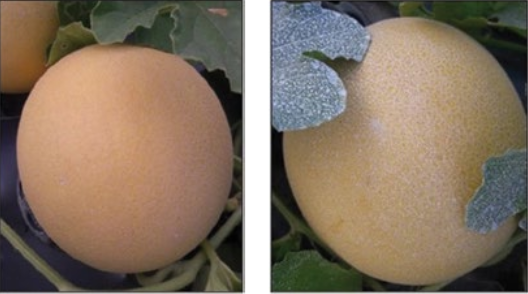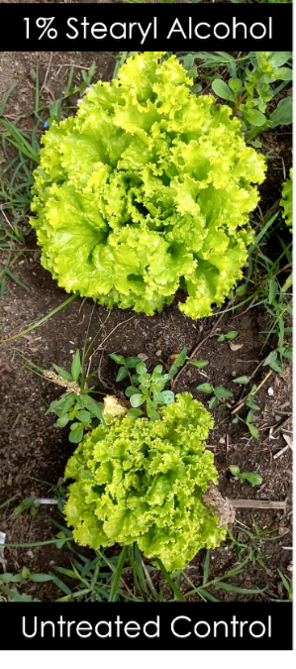Examining the effects of heat stress, and some possible solutions
The risk of heat stress in agriculture is growing as extreme weather events increase. Even short episodes of high temperatures can dramatically reduce plant productivity and stunt development by damaging the plant at the molecular level. Yield losses as high as 60 percent have been reported in some crops due to episodes of high temperature and prolonged plant stress. Recent studies suggest high temperatures could have more of an impact on crop yield than do precipitation and drought.
As the climate continues to destabilize, the loss of potential crop yields to high temperatures could eventually be deemed catastrophic, with related financial consequences estimated in the billions of dollars worldwide.
Heat stress can scorch leaves and stems, damage fruit, and inhibit shoot and root growth — all of which decrease plant productivity and result in decreased yields. Moreover, effects of heat stress are widespread and impact more crops than those typically associated with sunburn — pome fruit, cucurbits, Solanaceae, grapes, berries, etc. Crops such as cereals, nut crops, potatoes and leafy greens can also experience the negative effects of heat stress without visible sunscald.

Left: a stearyl alcohol product. Right: a kaolin clay product.
Visible necrotic tissue need not be present on plants as an indicator of heat stress — organization of cellular structures, cell membrane functions and protein synthesis can all be impacted below the visible spectrum. Plants experiencing heat shock will also have accelerated production of heat-shock proteins, other phytohormones and protective molecules.
Plants naturally protect themselves from heat stress — the question is whether an economically significant yield at high temperatures is possible. While some responses to heat stress are designed to help the plant survive, the result is a decrease in photosynthesis and plant productivity. Premature plant senescence can also be activated under such stressful heat-related conditions. In other words, unmitigated heat stress in a plant potentially leads to a decrease in crop marketable yield — not only from tissue necrosis, but also from less biomass and reduced fruit set.
Methods of Protection
A current area of research involves investigations related to the performance of crop varieties that have been bred for heat tolerance. For example, in some rice varieties, protective proteins are synthesized at a higher rate, leading to heat tolerance. Some tomato and grape varieties have altered gene expression believed to be associated with temperature tolerance.
While searching and selecting for heat-tolerant crop genotypes can be effective, it is also expensive and time consuming. More work is needed in the development of heat tolerance markers that are more distinguishable in plants to make heat-tolerant varieties easier to identify.

do not inhibit photosynthesis and have been
shown to decrease canopy temperature.
Due to the above constraints, the traditional approach to heat stress involves placing a physical barrier between the plant and the sun — either through shading and sun shields or through protective compounds like kaolin clay. These methods reduce necrotic damage like sunscald; however, the decrease in photosynthesis and productivity associated with blocking out the sun remain key concerns.
Calcium carbonate products allow additional penetration of sunlight compared to kaolin clay and shading. However, calcium carbonate products may not be fully efficient in preventing heat-related yield reductions, due to the reflection of UV rays. Additionally, kaolin clay and calcium carbonate are more difficult to mix and apply compared to other traditional agrochemicals.
New Heat-Stress Products
Newer products are paving the way forward when it comes to heat stress protection in crops. Stearyl alcohol-containing products do not inhibit photosynthesis and have been shown to decrease canopy temperature as they function via heat-stress mitigation. They have been associated with increased marketable yield from more biomass production and better sunscald protection compared to applications of traditional sun protection products such as those with active ingredients based on kaolin and calcium carbonate.
Other products on the market increase the production of antioxidants, supplement plant cuticles, enhance photosynthetic activity even while the plant is under stress, and prevent loss of water vapor. All these new products have the added benefit of being easy to tank mix and apply, without clogging up spray rigs — often with an MRL exemption — making them an excellent addition to a grower’s production strategy.
Summary
Heat stress is a growing concern and may develop into a massive yield-loss problem worldwide. Beside producing tissue necrosis, heat stress impacts marketable yield by impacting various biochemical pathways and thereby reducing plant productivity. Replacing older methods for heat stress reduction with newer, more targeted heat stress products is an excellent tool for the crop-management toolbox.
Tim Johnson has a PhD in entomology and is a vice president for field development and technical services at Pro Farm Group, Inc. (formerly Marrone Bio Innovations).















